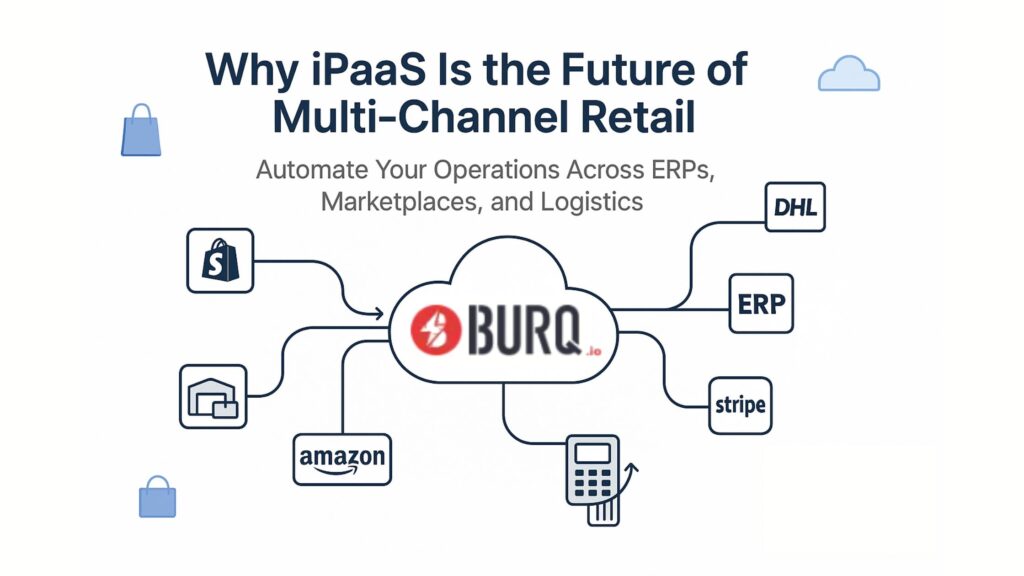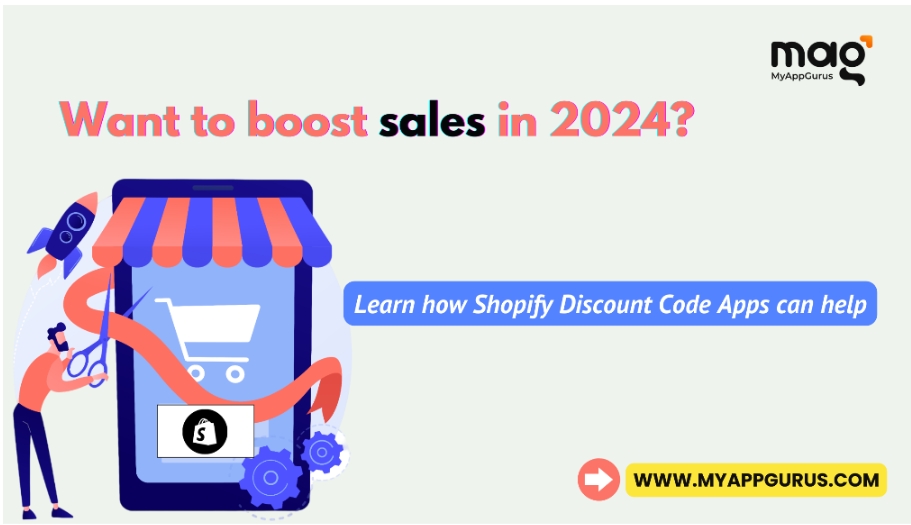Today’s retail landscape is no longer single-threaded. Brands sell through their Shopify or Magento store, push products on Amazon and Walmart, and rely on ERP systems, 3PLs, and payment gateways to keep operations moving. Customers, meanwhile, expect speed, accuracy, and consistency regardless of where or how they place an order.
But with growth comes fragmentation. Inventory updates don’t reflect in real time. Orders fall through the cracks. Shipping delays and mismatched payment records create costly friction. Retailers are left stitching systems together manually, which is not only time-consuming but increasingly unsustainable.
To remain competitive, businesses need more than just channel expansion, they need interoperability and automation across their stack. That’s where iPaaS comes in. In this blog, we explore why iPaaS is no longer optional for growing retail businesses and how solutions like Burq are redefining what seamless multi-channel operations should look like.
What Is iPaaS and Why Does It Matter?
iPaaS (Integration Platform as a Service) is a cloud-based tool that connects all the core systems a retail business uses—from eCommerce stores and ERPs to marketplaces, CRMs, and logistics platforms. It replaces brittle plugins and manual imports with automated data syncs across platforms.
For example, if a customer places an order on Amazon, iPaaS instantly:
- Syncs the order to your ERP (e.g., Dynamics 365, NetSuite, QuickBooks)
- Updates inventory on Shopify and other sales channels
- Pushes the shipping request to your 3PL or courier
- Reconciles the payment in your accounting system
This is all done without manual effort, and without needing custom development for every integration. iPaaS acts as the automation layer that keeps your business moving without interruptions.
Why Do Traditional Integrations Fail Modern Retailers?
Many businesses start with plugins, manual CSV uploads, or custom-built APIs. These may work in early stages but once order volume increases or new platforms are added, the cracks begin to show.
Here’s where traditional methods fall short:
- Plugins often only support basic use cases, lack flexibility, and break during platform updates.
- Custom APIs are expensive to build and harder to maintain over time.
- Manual syncing introduces human error and delays, especially during peak seasons.
- Point-to-point integrations aren’t scalable; adding one new platform often requires rewriting existing connections.
In contrast, iPaaS provides a centralized, scalable way to manage all data flows. You build once and connect many, without touching code again.
What Key Problems Does iPaaS Solve in Retail?
An iPaaS platform solves some of the biggest bottlenecks in multi-channel operations, such as:
- Inventory mismatches: Inventory is updated in real time across all platforms, reducing overselling and backorders.
- Order delays: Orders are instantly pushed to ERP and shipping systems for faster fulfillment.
- Manual reconciliations: Financial data flows automatically into accounting tools, making month-end closing easier.
- Data silos: Teams have a single source of truth for orders, shipments, and customer data.
- Scaling challenges: New platforms and integrations can be added quickly without technical overhauls.
The result? Faster operations, fewer errors, and a much better customer experience.
How Does iPaaS Enhance Omnichannel Fulfillment?
Omnichannel fulfillment means giving customers multiple ways to receive products—like home delivery, store pickup, third-party drop shipping, or even locker pickups. But this flexibility puts huge pressure on the backend.
If inventory isn’t properly synced between warehouses and channels, you risk accepting orders you can’t fulfill. If order data doesn’t reach your 3PL or ERP in time, shipments are delayed. And if returns aren’t reflected in your financial systems, reconciliation becomes a nightmare.
With iPaaS, all these moving parts are connected. For example:
- An order placed on BigCommerce can be routed to the nearest warehouse based on ZIP code.
- Inventory in your ERP updates across Amazon, Shopify, and Walmart instantly.
- Return data from your WMS flows back into your ERP and finance tools without manual intervention.
This results in smarter, faster fulfillment and fewer customer complaints.
Who Should Use iPaaS in Retail?
iPaaS isn’t just for large enterprises, it’s essential for any business operating across multiple platforms. You’ll benefit the most if you:
- Sell on two or more sales channels (e.g., Amazon + Shopify)
- Manage inventory or fulfillment through an ERP or WMS
- Work with 3PL providers or multiple shipping carriers
- Handle payments from multiple gateways
- Experience frequent order syncing or reconciliation issues
- Are expanding internationally or onboarding new channels
If any of these apply to you, chances are you’re spending valuable time and money on work that should be automated. iPaaS can help you scale efficiently without increasing headcount or complexity.
What Makes Burq Different from Other iPaaS Providers?
There are many integration platforms out there—but most are either too generic, too technical, or too narrowly focused.
Burq is built specifically for eCommerce, retail, logistics, and ERP integration. It offers:
- Over 100 pre-built connectors for platforms like Shopify, Magento, ChannelEngine, NetSuite, QuickBooks, Microsoft Dynamics, DHL, FedEx, Aramex, Stripe, and PayPal
- A no-code flow builder that lets you map complex business logic without technical knowledge
- Real-time monitoring and alerting for all your data flows
- Support for conditional routing, batching, and scheduling
Whether you’re routing high-value orders to specific carriers or pushing different product categories to different ERPs, Burq makes it easy and scalable.
What Are Some Real-World Use Cases of iPaaS in Retail?
Let’s look at how iPaaS plays out in real business scenarios.
Use Case 1: Real-Time Inventory Sync
A mid-sized apparel retailer sells on Shopify, Amazon, and Walmart. During sales, inventory moves fast. With traditional syncing, updates lag, leading to overselling and cancellations.
With Burq: Every time an item is sold, inventory updates instantly across all channels, preventing stockouts and customer frustration.
Use Case 2: Streamlined Fulfillment with Multiple Carriers
A home goods brand uses FedEx, Aramex, and DHL for global deliveries. Orders must be routed based on region and weight class.
With Burq: Routing logic is automated. Orders from Europe go to DHL, MENA to Aramex, and North America to FedEx—no manual sorting required.
Use Case 3: Faster Month-End Reconciliation
A high-volume electronics seller receives payments via PayPal, Stripe, and credit card. Manually matching transactions in their ERP wastes hours each week.
With Burq: Payments, refunds, and chargebacks are automatically synced to NetSuite with matching order IDs, streamlining finance operations.
How Secure and Reliable Is iPaaS?
Security is often a top concern when businesses integrate critical systems. Reputable iPaaS platforms follow industry-standard practices to ensure your data is safe and reliable.
Burq includes:
- End-to-end encryption for data in transit and at rest
- Role-based access controls so only the right teams have access
- Activity logs and audit trails to track changes
- High-availability architecture with built-in redundancies
This means your integrations stay live even during platform outages and your data stays protected throughout its journey.
How Do You Get Started with iPaaS?
Getting started with iPaaS doesn’t mean rebuilding your tech stack. Most platforms including Burq allow you to integrate one system at a time and grow incrementally.
The typical onboarding process involves:
- Identifying critical data flows like order syncing or inventory updates
- Mapping out source and destination systems
- Using pre-built connectors to establish flows
- Testing logic and alerts before going live
- Expanding into additional integrations or workflows
Burq’s team also offers guided onboarding, helping you configure flows based on your business rules so you can go live in days, not months.
Final Thoughts
Retail success today isn’t just about great products or competitive pricing, it’s about operational speed, data accuracy, and platform flexibility. In a world where customers expect two-day delivery and real-time updates, manual processes simply can’t keep up.
Burq iPaaS gives retailers the automation, control, and scalability needed to thrive in this fast-paced, multi-platform environment. It eliminates integration bottlenecks, reduces errors, and turns chaos into coordinated execution.
If your systems don’t talk to each other or if you’re still syncing data manually, it’s time to rethink your integration strategy.





